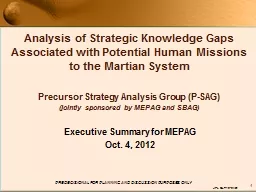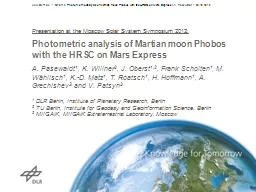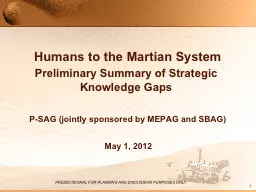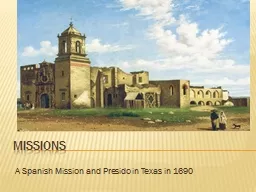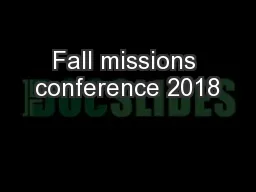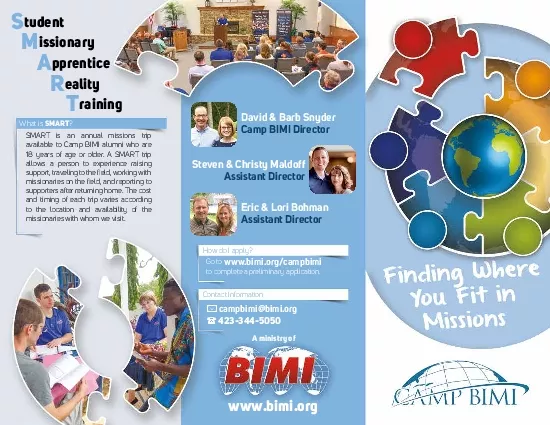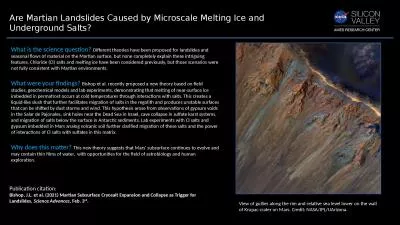PPT-1 Analysis of Strategic Knowledge Gaps Associated with Potential Human Missions to the
Author : trish-goza | Published Date : 2019-02-09
Precurso r Strategy An alysis Group PSAG jointly sponsored by MEPAG and SBAG Executive Summary for MEPAG Oct 4 2012 JPL CL12 2401 HISTORY Last MEPAG meeting Feb
Presentation Embed Code
Download Presentation
Download Presentation The PPT/PDF document "1 Analysis of Strategic Knowledge Gaps A..." is the property of its rightful owner. Permission is granted to download and print the materials on this website for personal, non-commercial use only, and to display it on your personal computer provided you do not modify the materials and that you retain all copyright notices contained in the materials. By downloading content from our website, you accept the terms of this agreement.
1 Analysis of Strategic Knowledge Gaps Associated with Potential Human Missions to the: Transcript
Download Rules Of Document
"1 Analysis of Strategic Knowledge Gaps Associated with Potential Human Missions to the"The content belongs to its owner. You may download and print it for personal use, without modification, and keep all copyright notices. By downloading, you agree to these terms.
Related Documents

